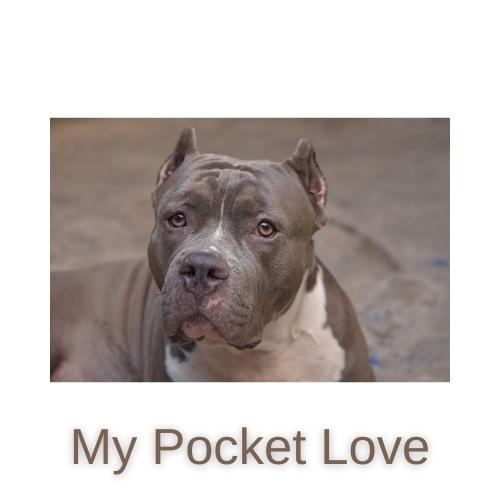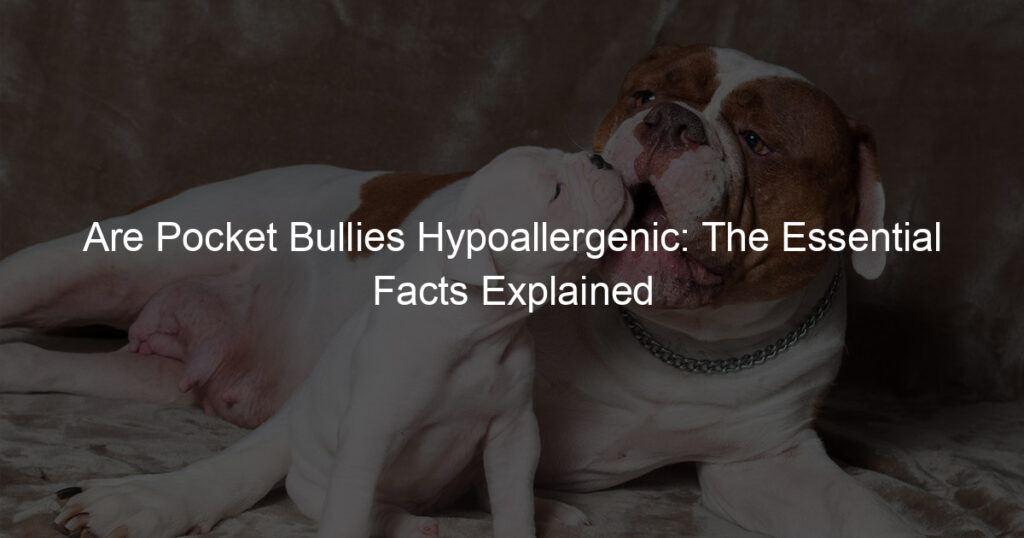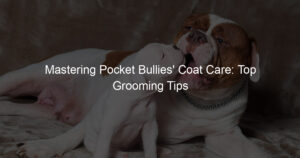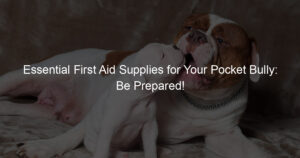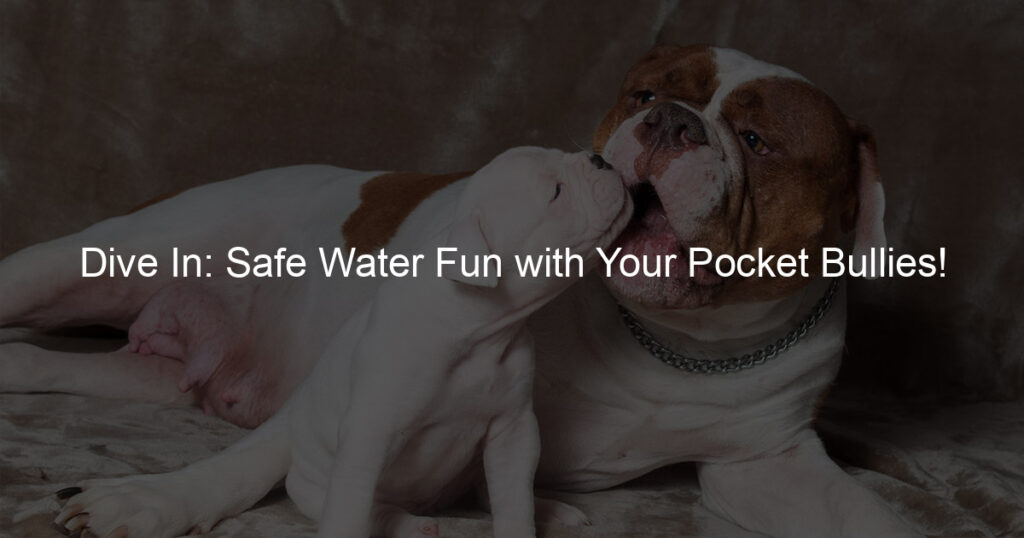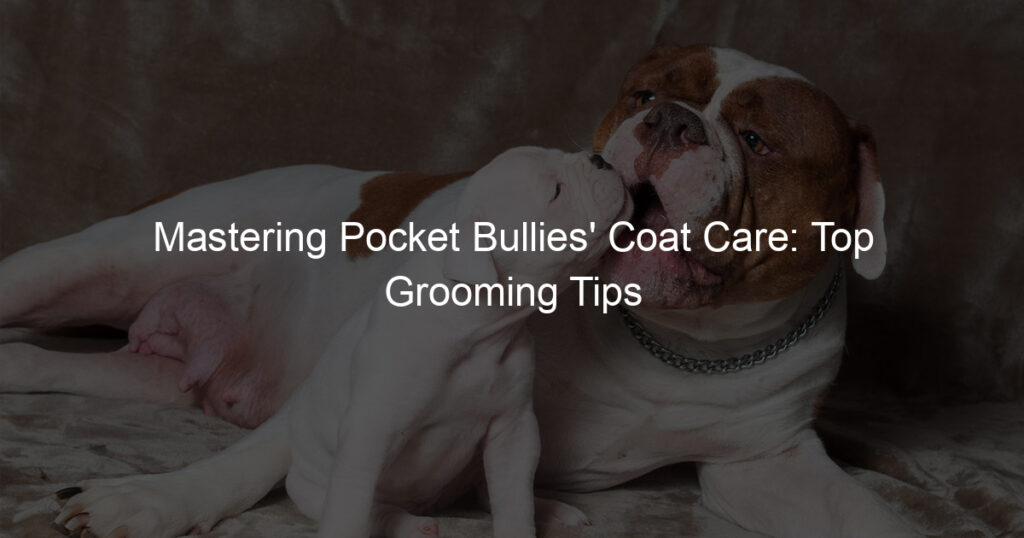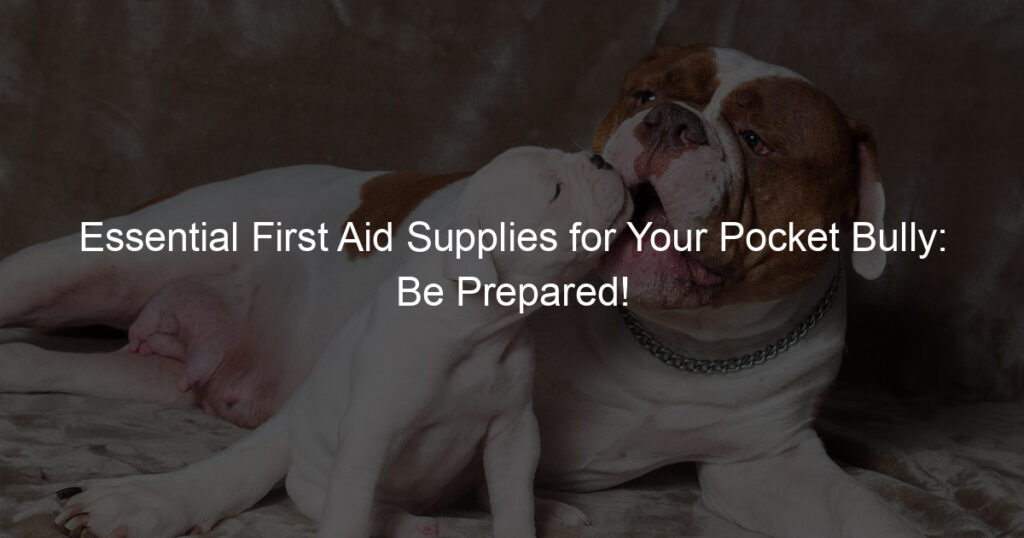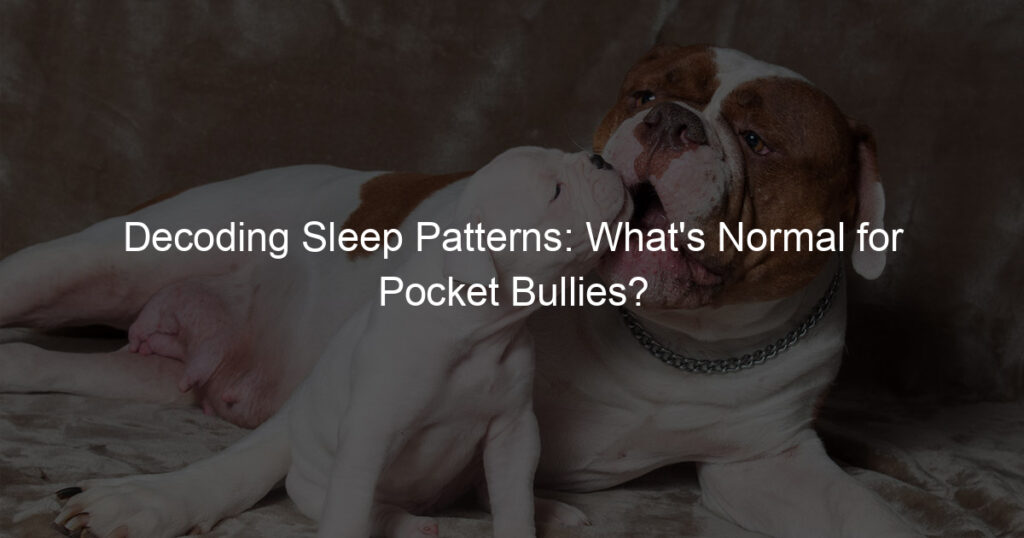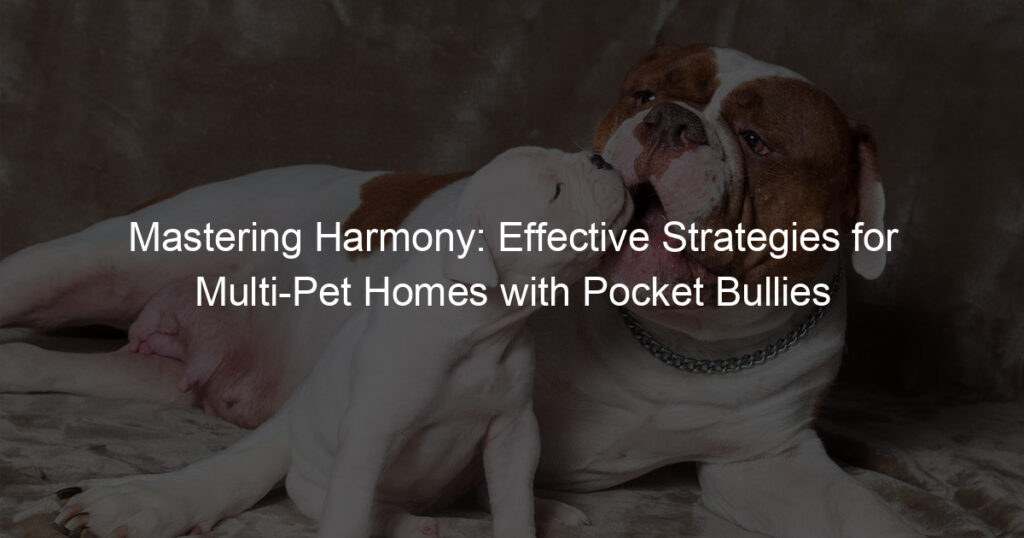Pocket Bullies, a popular and compact-sized variation of American Bullies, have gained a lot of attention in recent years.
Many potential dog owners are drawn to their unique appearance, smaller size, and muscular build. However, for those with allergies, it is essential to know if these dogs are hypoallergenic – meaning they produce fewer allergens and are less likely to trigger allergic reactions.
Understanding what qualifies as a hypoallergenic breed is crucial for those looking for a pet suitable for allergy sufferers.
Generally, these breeds shed less or have hair that produces fewer allergens, making them a better choice for people with allergies. With that in mind, let’s discuss whether Pocket Bullies can be considered hypoallergenic.
Key Takeaways
- Pocket Bullies are a popular and compact-sized variation of American Bullies
- Hypoallergenic breeds shed less or produce fewer allergens, making them suitable for allergy sufferers
- This article will explore if Pocket Bullies are hypoallergenic, as well as their health, grooming, and temperament
Are Pocket Bullies Hypoallergenic
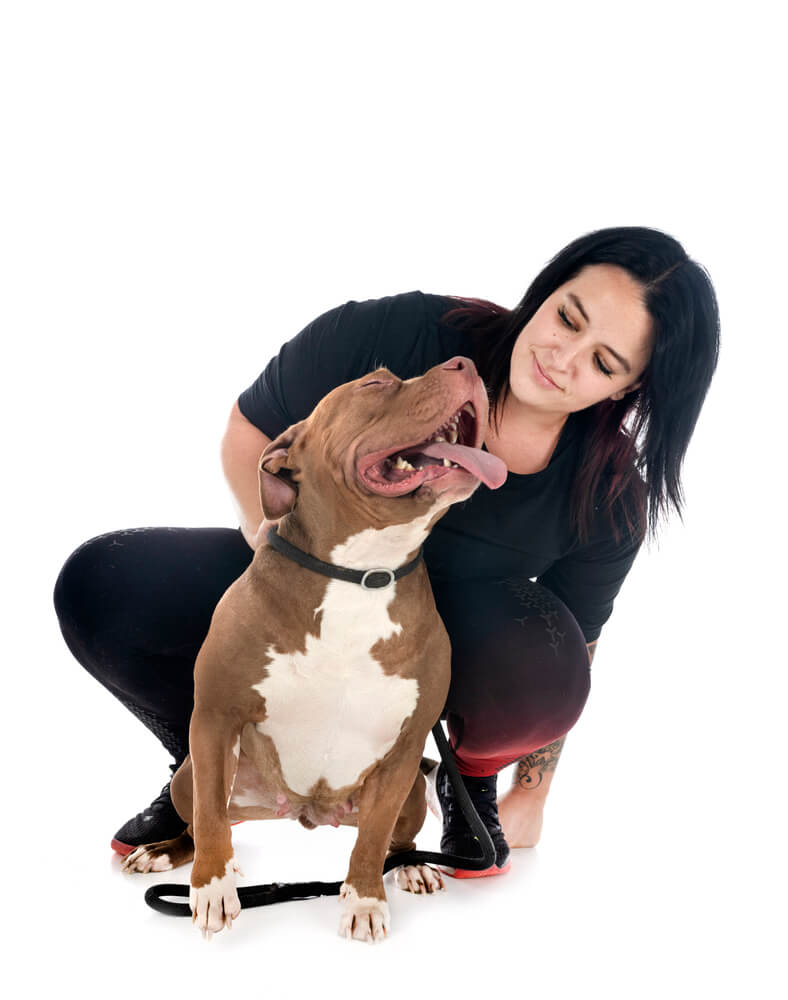
History
I want to talk about the history of Pocket Bullies. These dogs are a result of breeding different types of American Bullies to create a smaller, more compact size.
The purpose of breeding them was to have a compact, muscular, and confident companion that still carried the appearance and temperament of a full-sized American Bully.
The American Bully breed itself was developed in the 1980s and 1990s through the crossbreeding of American Pit Bull Terriers and American Staffordshire Terriers.
Standard and Sizes
Now let’s discuss the standards and sizes of Pocket Bullies. They belong to the American Bully breed, which has four main size categories: Pocket, Classic, Standard, and XL.
The Pocket Bully falls under the smallest category, but don’t let that fool you, as they still have a strong, muscular build.
For a better understanding, here are the size specifications:
- Pocket: Males measure between 14 to 17 inches (36-43 cm) at the withers, while females measure between 13 to 16 inches (33-41 cm).
- Standard: Males measure between 17 to 20 inches (43-51 cm) at the withers, while females measure between 16 to 19 inches (41-48 cm).
- Classic: Males and females have the same height range as the standard size, with a less bulky, more athletic build.
- XL: Males measure between 20 to 23 inches (51-58 cm) at the withers, while females measure between 19 to 22 inches (48-56 cm).
It’s essential to understand that while the Micro Bully isn’t an official category, these dogs can sometimes be even smaller than the Pocket size, measuring below 13 inches at the withers.
Color Varieties
Lastly, I’d like to touch on the color varieties of Pocket Bullies. They come in a wide range of colors, similar to the other American Bully sizes.
It’s not uncommon to see Pocket Bullies in colors such as:
- Black
- White
- Fawn
- Blue
- Champagne
- Chocolate
- Tri-colored
I must note that while the American Pocket Bully’s color variety is wide, Merle is considered a disqualifying color for showing and breeding within the breed standard.
Nevertheless, it doesn’t affect the dog’s personality or temperament. Overall, these variations in size, color, and build make Pocket Bullies an appealing and versatile breed for dog lovers.
Defining Hypoallergenic Breeds
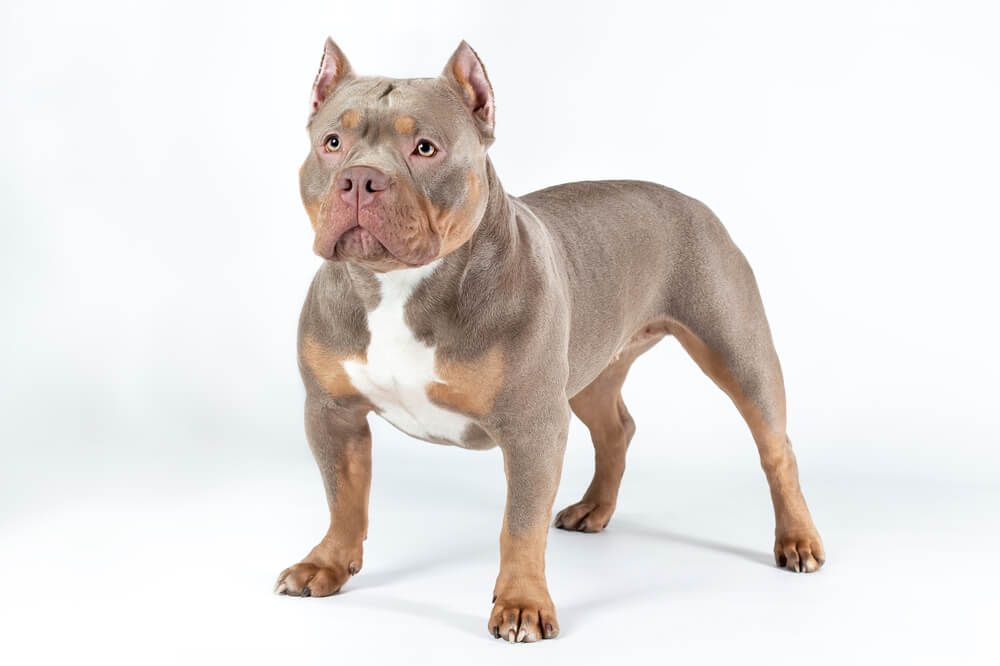
When discussing dogs, the term “hypoallergenic” refers to breeds that are less likely to cause allergic reactions in sensitive individuals.
As someone who has spent considerable time researching this topic, I can confidently say that while no breed is completely allergen-free, some breeds possess certain qualities that may reduce the likelihood of triggering allergies.
Firstly, hypoallergenic breeds typically produce fewer allergens, which include proteins found in a dog’s skin cells, urine, and saliva. These proteins can become airborne and cause symptoms such as sneezing, itching, and eczema in allergy sufferers.
Some breeds might naturally produce less of these allergens, making them more suitable companions for people with sensitivities.
Another factor that contributes to a breed’s hypoallergenic status is the type of coat they have. Breeds with less shedding tend to release fewer allergens into the environment, as the allergens are primarily released through shedding fur.
Non-shedding breeds, such as Poodles or Bichon Frises, might be more suitable for individuals who suffer from allergies.
It’s also worth noting that grooming habits can help manage allergen levels in dogs. Regular brushing, bathing, and maintaining a clean environment can minimize the presence of allergens, making it easier for allergy sufferers to live in harmony with their furry companions.
While considering a hypoallergenic breed is an excellent first step in accommodating allergies, it’s important to remember that individual dogs may still vary in allergen production.
Spending time with a specific dog before committing to ownership can help determine whether or not it triggers allergic reactions in sensitive individuals.
Are Pocket Bullies Hypoallergenic?
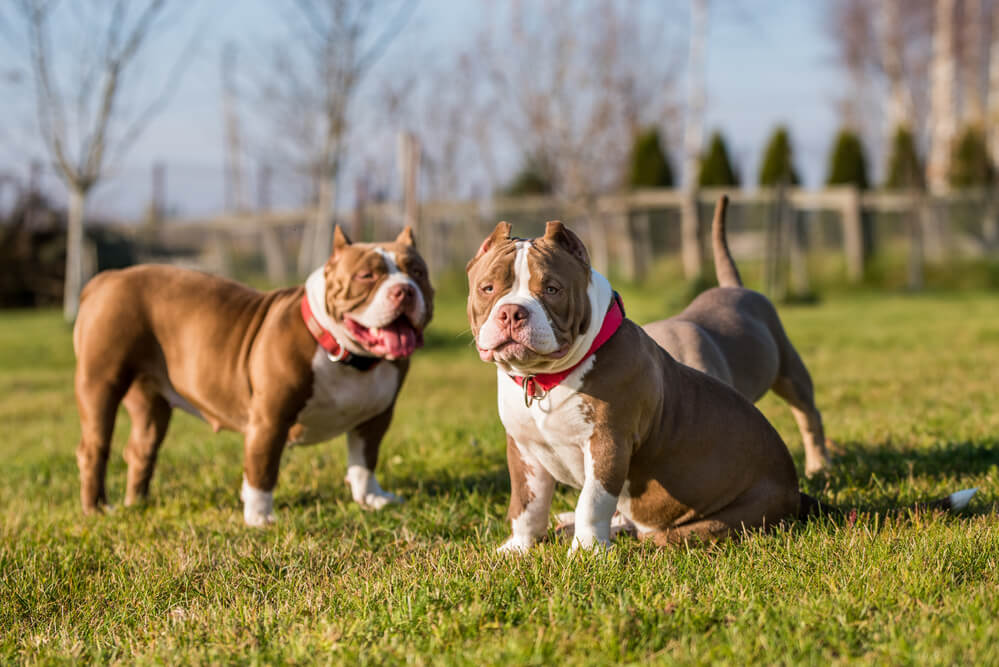
As a dog lover, I am often asked if pocket bullies are hypoallergenic. To answer this, let’s first understand what hypoallergenic means. Hypoallergenic dogs are breeds that are less likely to cause an allergic reaction in people because they produce fewer allergens.
Allergens are proteins found in a dog’s skin cells, urine, and saliva and are the primary cause of allergies.
Now, addressing the question at hand – Are pocket bullies hypoallergenic? Unfortunately, the answer is no. Pocket bullies, like all other bully breeds, are not considered hypoallergenic dogs. This is primarily due to their shedding habits, which release allergens into the environment.
Although pocket bullies have a short coats, they still shed moderately. Shedding is a natural process where dogs lose old or damaged hair, and it varies among breeds.
When dogs shed, their dander (skin cells) becomes airborne, and this is what triggers allergic reactions in sensitive individuals.
Yet, it’s essential to note that individual dogs within a breed may differ. Some pocket bullies may shed less than others, making them more suitable for people with mild allergies.
In these cases, allergy sufferers may have more success being around pocket bullies.
To minimize allergens and manage allergies for dog owners, regular grooming and cleaning are key. By brushing your pocket bully consistently, you can reduce the amount of shedding, effectively decreasing dander and related allergens.
Vacuuming your home frequently, using air purifiers, and washing your dog’s bedding can also help mitigate allergy symptoms.
While pocket bullies are not hypoallergenic, proper care and maintenance can make it easier for people with mild allergies to live with these loving, loyal companions.
Health and Wellness
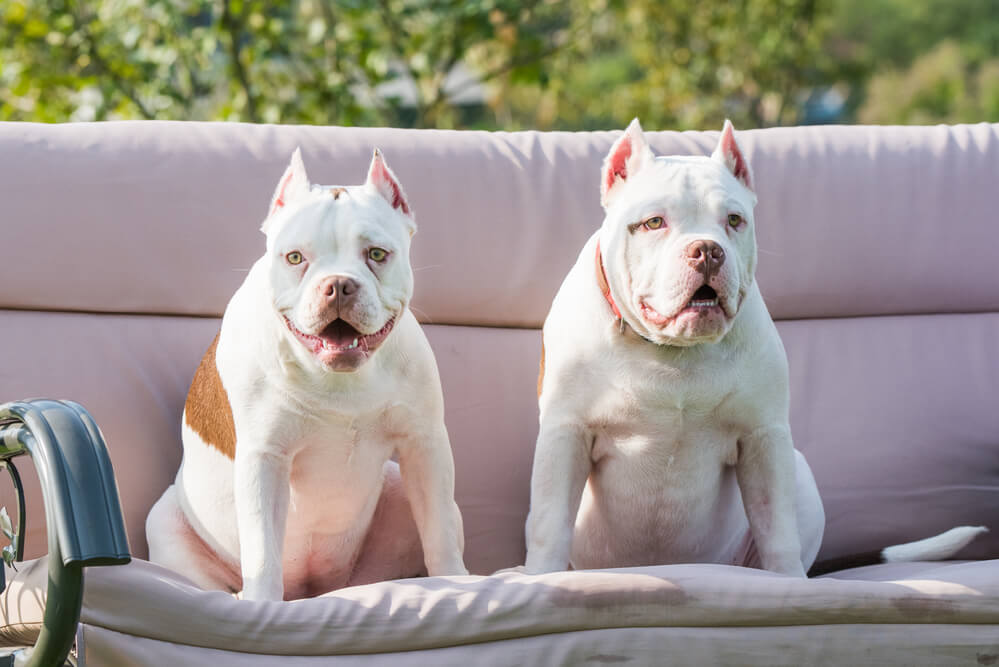
Common Health Issues
As a responsible owner, I pay close attention to my pocket bully’s health. While they are generally a healthy breed, there are some common health issues to watch out for.
Hip dysplasia, for example, is a condition that affects many pocket bullies. This is a genetic disorder that causes the hip joint to develop abnormally, leading to arthritis and mobility issues.
Another health concern in this breed is brachycephalic airway syndrome. My pocket bully has a short, broad head which can lead to breathing problems.
This is due to the compressed nasal passages and elongated soft palates often found in brachycephalic breeds.
Skin Problems and Allergies
Along with these common health issues, my pocket bully may also experience skin problems and allergies. They can be prone to skin irritations due to their short coat and may develop allergies to certain environmental substances or foods.
To keep my bully’s skin healthy, I routinely check for any signs of redness, itching, or abnormal growths and keep their bedding and surroundings clean.
It’s important for me to discuss my pocket bully’s symptoms with my veterinarian to determine the cause of the allergy and develop a treatment plan accordingly.
This may involve lifestyle adjustments, dietary changes, or medication.
Life Expectancy
While some health issues may be present in the pocket bully breed, they generally have a good life expectancy. The average lifespan for my pocket bully ranges from 10 to 12 years.
To ensure that my bully has a long, healthy life, I follow my veterinarian’s recommendations for regular check-ups, vaccinations, and a balanced diet.
Overall, keeping my pocket bully active and maintaining their weight through proper nutrition, exercise, and mental stimulation can significantly contribute to their overall health and longevity.
With proper care and attention to their specific health needs, pocket bullies can live a happy and fulfilling life.
Grooming and Care

Coat Care
In my experience, taking care of a Pocket Bully’s coat is quite simple. Their short and smooth coats require minimal grooming. Although they are not hypoallergenic, they do shed less compared to many other breeds.
I make sure to brush my bully’s coat once a week with a soft-bristle brush or a grooming mitt to remove any loose hair, keep the coat shiny, and stimulate skin oils.
It also helps reduce shedding. I tend to bathe my Pocket Bully every 4 to 6 weeks, depending on their activity level and how dirty they get.
Diet and Nutrition
Feeding my Pocket Bully a well-balanced diet is crucial to their overall health and well-being. I always ensure to provide high-quality dog food that follows the guidelines based on their age, size, and activity level.
Some of the nutritious ingredients I look for in my dog’s food are:
- Protein from a quality source such as chicken, fish, or beef
- Complex carbohydrates like rice or oats
- Healthy fats, including omega-3 and omega-6 fatty acids
- Essential vitamins and minerals like calcium and phosphorus
I typically divide my dog’s daily food intake into two or three smaller meals, making sure they always have fresh water available. Treats can be given occasionally but should never make up more than 10% of my Pocket Bully’s daily calorie intake.
To avoid unnecessary weight gain and health issues related to high-fat diets, I always choose low-fat treats whenever possible.
Exercise Requirements
Although my Pocket Bully might be small in size, they still need sufficient exercise to keep them healthy and happy. As a moderately active breed, I try to provide them with at least 30 to 45 minutes of physical activity daily.
Walks, fetch, and general playtime are some of our favorite ways to get some exercise. Since Pocket Bullies are prone to joint issues, I make sure not to overexert my dog or engage them in activities where they could potentially be injured.
Monitoring their exercise level ensures they maintain a healthy weight and reduces the risk of developing health-related problems.
Pocket Bullies Temperament
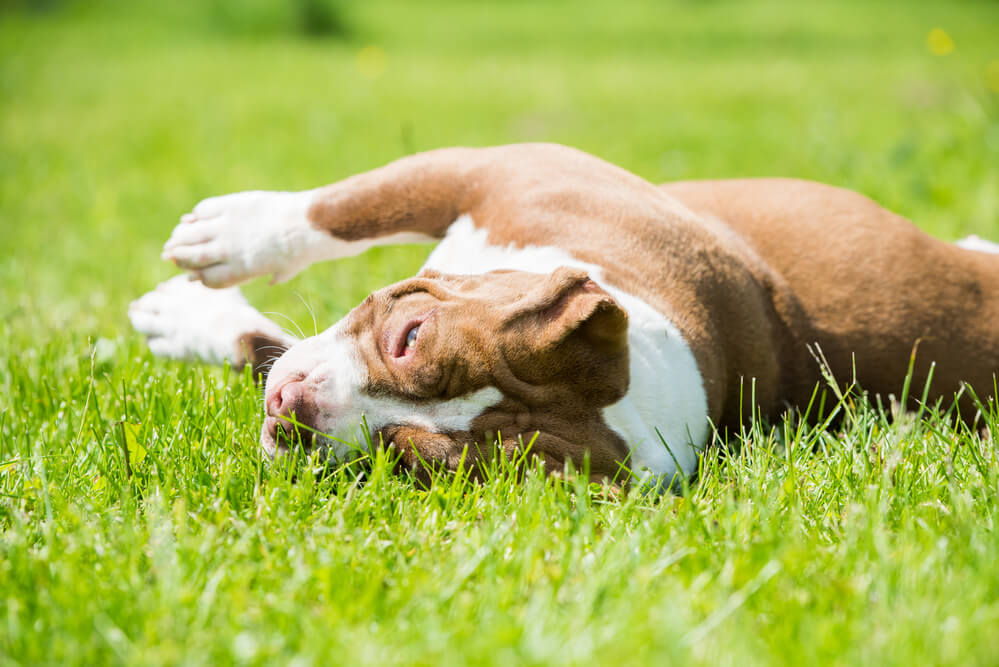
Training and Socialization
As an owner of a Pocket Bully, I can confidently say that proper training and socialization are vital to their temperament. Pocket Bullies are intelligent and eager to please, making training relatively easy.
Utilizing positive reinforcement techniques and patience leads to well-mannered and obedient dogs.
When it comes to socialization, exposing them to different people, environments, and situations helps form their positive attitude toward others. I made sure to introduce my Pocket Bully to other dogs and people at an early age.
It helped them develop into friendly and social pets, always ready to make new friends.
Family and Companion Dog
One of the most endearing aspects of Pocket Bullies is their loving and gentle nature, especially towards families. As a family pet, my Pocket Bully is well-behaved and protective towards every family member.
They enjoy cuddling and bonding with us, making them ideal companions for various households.
Despite their intimidating appearance, Pocket Bullies are gentle with children and make excellent family dogs. They are attentive, gentle, and careful around kids, creating a nurturing environment.
Although they can also be good guard dogs due to their loyalty and protective instincts, their primary role is that of a loving family companion.
Pocket Bullies showcase a well-rounded and adaptable temperament as long as they are provided with adequate training, socialization, and love.
They make wonderful family pets and are the perfect companions for families looking for a devoted and affectionate dog.
Potential Costs
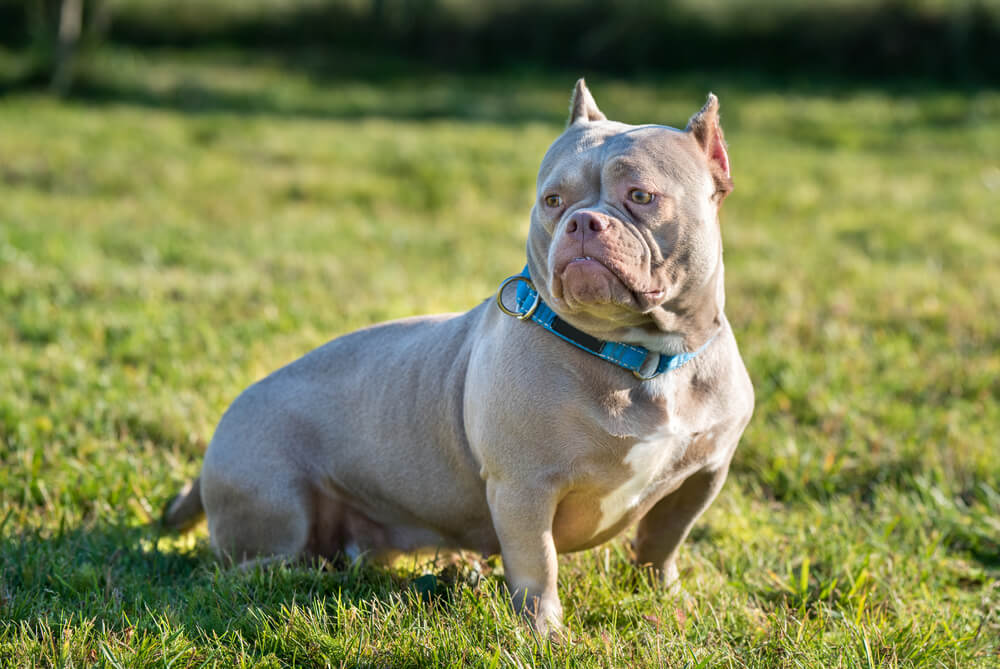
As I explore the topic of pocket bullies and their hypoallergenic qualities, it is essential to discuss the potential costs associated with owning and maintaining these unique pets.
Although I am a proponent of pocket bullies, it is crucial to understand the financial implications before investing in one of these furry companions.
The initial expense of acquiring a pocket bully can range from $2,000 to $5,000, depending on their pedigree, breeder reputation, and rarity. It is essential to research reputable breeders to ensure you are getting a healthy and well-bred dog.
If adopting, the costs may be reduced, but adoption fees and initial veterinary visits should still be accounted for.
Maintaining a pocket bully can also be costly. Vet visits for annual check-ups, vaccinations, and any unexpected health issues need to be factored in. Although pocket bullies are generally healthy dogs, their short coats can sometimes lead to skin sensitivities or allergies.
A proper diet and grooming products targeted towards sensitive skin can help with this issue, but they will also come with an additional cost.
In addition to health expenses, there are also costs to properly train, socialize, and care for your pocket bully. Training classes or a professional trainer may be necessary, depending on your experience level.
Socialization and exercise are also vital for pocket bullies, so budgeting for dog park memberships, daycare, or occasional dog sitting may be required if you do not have the time or ability to provide these for your pet.
Furthermore, some basic expenses are inevitable with any dog, such as:
- Food
- Beds and bedding
- Toys
- Collars, leashes, and harnesses
- Grooming supplies (like brushes, nail clippers, and shampoo)
- Crate or kennel (if desired)
- Dog waste bags and other supplies
Given these various factors, it is important to consider all aspects of the potential costs before deciding to bring a pocket bully into your life. It is a serious commitment, not only emotionally but financially as well.
Investing in the well-being of your pocket bully will ensure a happy, healthy, and long-lasting companionship.
Frequently Asked Questions
Do Pocket Bullies have low-shedding coats?
As a Pocket Bully owner, I can confirm that these dogs do not have low-shedding coats. They tend to shed moderately throughout the year, with increased shedding during seasonal changes. Regular grooming and brushing can help manage this shedding.
How do Pocket Bullies affect people with allergies?
Unfortunately, Pocket Bullies are not hypoallergenic. Their shedding coats can trigger allergies in sensitive individuals. Allergens can become airborne or attach to fabric, causing allergic reactions. It is essential to take precautions if you have allergies and are considering a Pocket Bully.
Which dog breeds are similar to Pocket Bullies but hypoallergenic?
If you’re attracted to the Pocket Bully’s appearance and temperament but require a hypoallergenic breed, some alternatives are:
- Poodle (standard, miniature, or toy sizes)
- Schnauzer (standard, miniature, or giant sizes)
- Bedlington Terrier
Though not identical to Pocket Bullies, these breeds share some common traits and are less likely to cause allergies.
Are there any hypoallergenic alternatives to Pitbull breeds?
While there is no direct Pitbull breed alternative that is hypoallergenic, some breeds that possess similar traits include the American Hairless Terrier, Xoloitzcuintli, and the Peruvian Inca Orchid.
These breeds are hairless or have very short coats, making them less likely to cause allergic reactions.
What factors make a dog breed hypoallergenic, and do Pocket Bullies have them?
Hypoallergenic dog breeds produce fewer allergens, such as dander and saliva, which are the primary causes of pet allergies.
Factors that contribute to a breed’s hypoallergenic status include:
- Low-shedding or hairless coats
- Less dander production
- Minimal saliva production
Pocket Bullies do not possess these characteristics, as they shed moderately and produce standard levels of dander and saliva.
How can I manage allergies when living with a Pocket Bully?
If you have allergies but still wish to own a Pocket Bully, consider taking the following precautions:
- Bathe and groom your dog regularly to reduce shedding and dander.
- Vacuum your home frequently and use air purifiers with HEPA filters.
- Designate specific “pet-free” zones in your home.
- Wash your hands after touching your dog, and avoid touching your face.
- Consult with an allergist for personalized advice and potential treatments.
